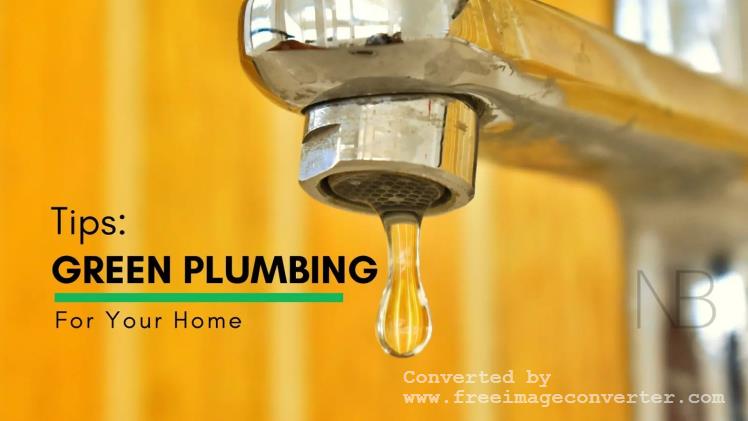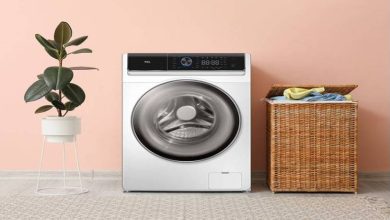Top Tips for Eco-Friendly Plumbing: Sustainable Solutions for Your Home

Welcome to the article on the top tips for eco-friendly plumbing!
In an era where environmental consciousness is on the rise, it’s crucial to recognise that our homes play a pivotal role in conserving precious resources. One area where this impact is keenly felt is in our plumbing systems.
The importance of eco-friendly plumbing practices cannot be overstated, as they hold the key to not only saving water but also significantly reducing our environmental footprint.
Understanding Low-Flow Fixtures:
Low-flow fixtures are a fundamental aspect of eco-friendly plumbing. These fixtures, including taps, showerheads, and toilets, are specially designed to limit water flow while maintaining their functionality.
The concept is simple – less water is used for the same tasks, ultimately conserving water without compromising comfort or convenience.
Choosing the Right Low-Flow Fixtures
Selecting the appropriate low-flow fixtures for different areas of the home is essential to maximize water conservation.
Here are some tips to help homeowners make informed choices:
-
Flow Rate
Check the fixture’s flow rate, which is typically measured in liters per minute (LPM) for taps and showerheads, and liters per flush (LPF) for toilets. Look for fixtures with lower flow rates to save more water.
-
Performance
Opt for low-flow fixtures that maintain adequate performance. Showerheads should provide a satisfying spray pattern, and toilets should effectively clear waste with a single flush.
-
Certification
If in Australia look for fixtures with the Water Efficiency Labelling and Standards (WELS) label, as they meet rigorous efficiency and performance standards. WELS-certified fixtures guarantee both water savings and top-notch functionality.
-
Style and Design
Low-flow fixtures come in a wide range of styles and designs to suit various preferences and home aesthetics. Homeowners can find fixtures that match their personal taste while still prioritizing water conservation.
Defining Rainwater Harvesting:
Rainwater harvesting is a sustainable practice that involves collecting and storing rainwater for various non-potable uses within residential properties.
It’s a system that harnesses the natural gift of rainfall and transforms it into a valuable resource for tasks like landscape irrigation, toilet flushing, and even laundry.
Rainwater harvesting systems are designed to capture, filter, and store rainwater from roof and gutters or other surfaces, making it available for on-site use.
Here are some tips to consider before installing a rainwater harvesting system at your home:
-
Consult a Professional
Seek guidance from a professional rainwater harvesting installer or water systems plumber to assess your property’s suitability and to design a system that meets your specific needs.
-
Tank Sizing
Choose an appropriately sized storage tank based on your water needs and available space.
-
Gutter Maintenance
Keep gutters and downpipes clean to ensure efficient rainwater collection.
-
Water Quality
Install effective filtration and purification systems to maintain water quality and safety.
-
Regular Maintenance
Perform routine maintenance, such as tank cleaning and filter replacement, to keep the system running smoothly.
The Vital Role of Regular Plumbing Maintenance:
Regular plumbing maintenance is the unsung hero of eco-friendly plumbing. It’s not just about fixing issues when they arise but proactively preventing them.
Think of it as giving your plumbing system a regular check-up to ensure it stays efficient, leak-free, and environmentally responsible.
Maintenance Tips for an Eco-Friendly Plumbing System
-
Clean taps and sink plugs
Sediments can build up in tap heads and sink plugs, reducing water flow efficiency. Periodically clean them to maintain optimal water pressure.
-
Toilet Checks
Test toilets for leaks by adding a few drops of food coloring to the tank. If color appears in the bowl without flushing, there’s a leak that needs attention.
-
Drain Maintenance
Regularly clear drains with non-toxic, enzyme-based cleaners to prevent clogs. Avoid using harsh chemicals that can harm pipes and the environment.
-
Water System Service
Schedule annual water system maintenance to ensure it operates efficiently and doesn’t waste energy or water.
-
Roof and Gutter Inspection
Keep your roof and gutters clean to prevent leaks that could damage your plumbing system.
Evolving Technologies in Eco-Friendly Plumbing:
As we look ahead, it’s impossible not to be excited about the remarkable innovations in eco-friendly plumbing.
The future of sustainable water management is bright, with technology playing a pivotal role in revolutionising how we use and conserve this precious resource.
Smart Plumbing Systems and IoT Devices
One of the most transformative advancements is the integration of smart plumbing systems and Internet of Things (IoT) devices. These technologies bring unprecedented levels of control, efficiency, and water conservation to our homes.
Smart taps, for instance, allow precise control over water flow and temperature, reducing unnecessary water wastage.
IoT-enabled leak detection systems can instantly alert homeowners to potential leaks, helping prevent damage and water waste.
The Role of Data and Automation
The heart of these innovations lies in data and automation. Smart plumbing systems collect data on water usage, patterns, and even weather forecasts to optimize water delivery and heating. They learn your habits and adjust accordingly, minimizing waste without compromising convenience.
These systems empower homeowners to make informed decisions about water consumption and conservation.
A Greener Future Awaits
As we conclude, it’s clear that eco-friendly plumbing is not static, it’s an ever-evolving field driven by innovation and a commitment to a sustainable future.
By embracing these technologies and staying informed, homeowners can play an active role in conserving water, reducing their environmental footprint, and enjoying the benefits of a smarter, more efficient plumbing system.
Thank you for joining us on this article and we hope it has been beneficial to you.



